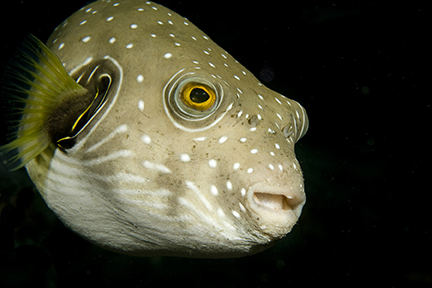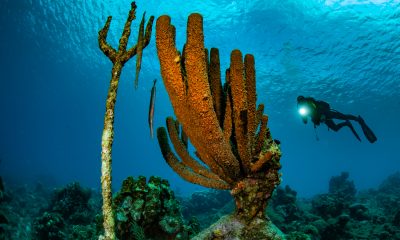News
Jim & Cary Yanny’s Guide to Diving in Indonesia
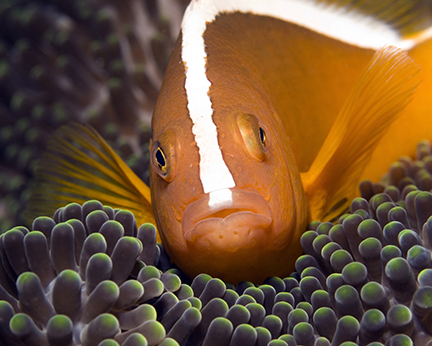
Part 2: Manado and Bunaken National Park
Coelacanth? Really?
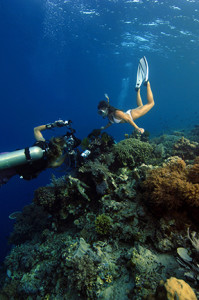 The National Geographic TV documentary I was watching was following an expedition to exotic Indonesia to search for one of earth’s natural unicorns, the coelacanth. This truly prehistoric fish had previously been thought to only exist in the waters off Southern Africa. That was until an eminent marine biologist, Dr Mark Erdmann, had been alerted of an amazing discovery in a local fisherman’s net; a large, chunky fish measuring two metres in length, with sharp teeth, stumpy tail fin and thick, leathery scales. Mark couldn’t believe what he was hearing and rushed to Manado Fish Market to see for himself…and there it was… a coelacanth. In Indonesia!
The National Geographic TV documentary I was watching was following an expedition to exotic Indonesia to search for one of earth’s natural unicorns, the coelacanth. This truly prehistoric fish had previously been thought to only exist in the waters off Southern Africa. That was until an eminent marine biologist, Dr Mark Erdmann, had been alerted of an amazing discovery in a local fisherman’s net; a large, chunky fish measuring two metres in length, with sharp teeth, stumpy tail fin and thick, leathery scales. Mark couldn’t believe what he was hearing and rushed to Manado Fish Market to see for himself…and there it was… a coelacanth. In Indonesia!
Soon the world of marine biology was on fire. This was the first time a coelacanth had been seen in Asia. In fact, it was the first time for one to be known to live anywhere other than South Africa, Mozambique or the Comoro Islands off Madagascar. The discovery was truly sensational. So big that it contributed to the group of five ‘Bunaken’ islands lying just offshore from Manado Bay being made one of Indonesia’s eighteen national parks in 1991, which it has been ever since.
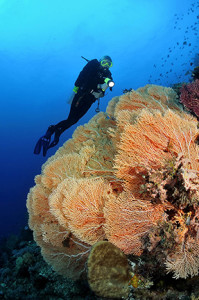 As I watched that show telling the story of the research vessel plying Bunaken’s waters, the crew dropping ROVs over the side as they swept the steep coral walls in search of this most elusive of creatures, I turned and looked out of my living room window at the blue sea beyond at an impressive sight of a mid-sea volcano rising from the 2000m-deep sea to an azure sky filled with gathering angry storm clouds.
As I watched that show telling the story of the research vessel plying Bunaken’s waters, the crew dropping ROVs over the side as they swept the steep coral walls in search of this most elusive of creatures, I turned and looked out of my living room window at the blue sea beyond at an impressive sight of a mid-sea volcano rising from the 2000m-deep sea to an azure sky filled with gathering angry storm clouds. 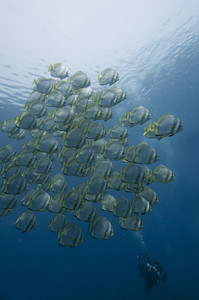 The volcano is Manado Tua, or ‘Old Manado’. To its east is Bunaken, low-lying and the largest of this archipelago of five islands. A strange feeling passed through me as I realised how incredible it was, and how privileged we were, to be living in a place that warranted the great Nat Geo to send a documentary film crew to! Not only that, but to be running a dive centre that dived the very same islands Nat Geo was here to explore on a daily basis!
The volcano is Manado Tua, or ‘Old Manado’. To its east is Bunaken, low-lying and the largest of this archipelago of five islands. A strange feeling passed through me as I realised how incredible it was, and how privileged we were, to be living in a place that warranted the great Nat Geo to send a documentary film crew to! Not only that, but to be running a dive centre that dived the very same islands Nat Geo was here to explore on a daily basis!
As the documentary revealed, in two whole weeks of searching with their high-tech subs, the Nat Geo crew didn’t find a single coelacanth. Despondent, and with a last throw of the dice before boarding their plane back home, they abandoned the deeper waters around Bunaken’s islands and dropped an ROV next to a fringing reef on the North Sulawesi mainland coast, just down the road from our dive centre. There, at about 200m depth, they found two coelacanths in a cave. It was even more bizarre to think that we had probably been driving our boat over them all these years without knowing it. (NB coelacanths live in deep places. Don’t plan a dive holiday to see them!)
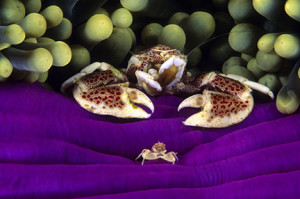 Manado is where we did our first ever dive in Indonesia back in 1999 on a dive site on Manado Tua volcano, ‘Muka Gereja’, meaning ‘in front of the church’. The site lives up to its name; coming up from a glorious half-light dive on an extensive hard coral field swept by schools of fusiliers and anemones housing many different species of clown fish, we’ll never forget the sights and sounds that greeted us as we hit the surface. It was a sunny Sunday morning and the sea was as flat as the proverbial pancake, so we inflated our BCDs and pulled off our masks to share our enjoyment of the dive with each other as we gently finned away from the reef to our approaching dive boat. In front of us was an 800m high volcano covered in palm trees. At water level on the coral sand beach was a little white church built in a Dutch or Portuguese style – not sure which – but it was all spires and crosses and its bells were ringing out calling its congregation to prayer. A pig ran down the beach past the church grunting so loudly that we could easily hear it from 200m away. The sun was hot and we realised we were in a rare and special place and time. So special, in fact, that we went back to Manado the very next year and ended up living there until 2012.
Manado is where we did our first ever dive in Indonesia back in 1999 on a dive site on Manado Tua volcano, ‘Muka Gereja’, meaning ‘in front of the church’. The site lives up to its name; coming up from a glorious half-light dive on an extensive hard coral field swept by schools of fusiliers and anemones housing many different species of clown fish, we’ll never forget the sights and sounds that greeted us as we hit the surface. It was a sunny Sunday morning and the sea was as flat as the proverbial pancake, so we inflated our BCDs and pulled off our masks to share our enjoyment of the dive with each other as we gently finned away from the reef to our approaching dive boat. In front of us was an 800m high volcano covered in palm trees. At water level on the coral sand beach was a little white church built in a Dutch or Portuguese style – not sure which – but it was all spires and crosses and its bells were ringing out calling its congregation to prayer. A pig ran down the beach past the church grunting so loudly that we could easily hear it from 200m away. The sun was hot and we realised we were in a rare and special place and time. So special, in fact, that we went back to Manado the very next year and ended up living there until 2012.
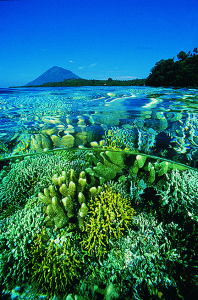 As I’ve said, Bunaken National Park is made up of the five islands of Bunaken, Manado Tua, Siladen, Montehage and Nain plus the southern Park section on the mainland of Sulawesi Island. Most of the diving around these populated islands is on coral-encrusted vertical walls. If you like drift diving you’ll love Bunaken as nearly all dives are done on the drift with the dive boat following your bubbles to pick you up wherever you surface*. Nearly anyone who’s dived Bunaken will tell you that this makes for a very lazy, relaxing and enjoyable dive experience. (If you’re looking for loads of exercise on your dive trip, this is not the place for you!)
As I’ve said, Bunaken National Park is made up of the five islands of Bunaken, Manado Tua, Siladen, Montehage and Nain plus the southern Park section on the mainland of Sulawesi Island. Most of the diving around these populated islands is on coral-encrusted vertical walls. If you like drift diving you’ll love Bunaken as nearly all dives are done on the drift with the dive boat following your bubbles to pick you up wherever you surface*. Nearly anyone who’s dived Bunaken will tell you that this makes for a very lazy, relaxing and enjoyable dive experience. (If you’re looking for loads of exercise on your dive trip, this is not the place for you!) 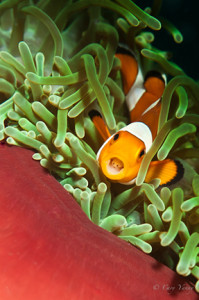 The reefs are dotted with enormous barrel sponges on the vertical sections and reef sharks, eagle rays, red tooth triggerfish, pyramid butterflyfish and schools of jacks can be spotted there. The ‘shoulder’ of the reef, from about 10m to the surface, is simply incredible in terms of coral coverage and sheer beauty. It’s certainly one of the most colourful sites we’ve ever seen underwater; the soft coral is home to clouds of thousands of damselfish, anthias, sergeant majors and clownfish. As the reef comes so close to the surface, it’s also a perfect spot for families with snorkellers (but don’t expect a developed holiday destination with entertainment laid on for the kids. North Sulawesi is a ‘real place’; if your kids like watching Nat Geo Channel go ahead and book a holiday). In the deep waters of Manado Bay, between the mainland and the islands, you can often spot pods of dolphin or pilot whale. There’s even occasional sightings of sperm whale and orca in the bay during their migration time.
The reefs are dotted with enormous barrel sponges on the vertical sections and reef sharks, eagle rays, red tooth triggerfish, pyramid butterflyfish and schools of jacks can be spotted there. The ‘shoulder’ of the reef, from about 10m to the surface, is simply incredible in terms of coral coverage and sheer beauty. It’s certainly one of the most colourful sites we’ve ever seen underwater; the soft coral is home to clouds of thousands of damselfish, anthias, sergeant majors and clownfish. As the reef comes so close to the surface, it’s also a perfect spot for families with snorkellers (but don’t expect a developed holiday destination with entertainment laid on for the kids. North Sulawesi is a ‘real place’; if your kids like watching Nat Geo Channel go ahead and book a holiday). In the deep waters of Manado Bay, between the mainland and the islands, you can often spot pods of dolphin or pilot whale. There’s even occasional sightings of sperm whale and orca in the bay during their migration time.
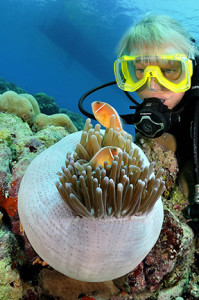 The Southern section of Bunaken National Park offers some great sites full of critters and colourful smaller coral walls and gardens. (Dr Erdmann and his associate Dr Gerry Allen conducted an extensive scientific fish survey in the Southern section a couple of years ago and counted so many different fish species here that it now ranks in third place on the fishy variety scale – worldwide!)
The Southern section of Bunaken National Park offers some great sites full of critters and colourful smaller coral walls and gardens. (Dr Erdmann and his associate Dr Gerry Allen conducted an extensive scientific fish survey in the Southern section a couple of years ago and counted so many different fish species here that it now ranks in third place on the fishy variety scale – worldwide!)
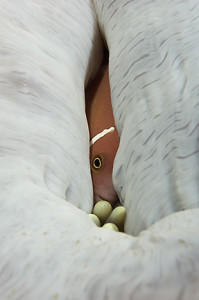 Although Manado can be dived year-round, the best sea conditions and most vibrant colours are experienced during the dry season months of April to Oct/Nov. Climate is hot and humid with air temperatures in the 28-31C range and water between 26-29C.
Although Manado can be dived year-round, the best sea conditions and most vibrant colours are experienced during the dry season months of April to Oct/Nov. Climate is hot and humid with air temperatures in the 28-31C range and water between 26-29C.
Manado is the capital of North Sulawesi province of Indonesia. North Sulawesi offers excellent resorts and dive centres to round off the offering on the ground. Getting there is comfortable with flights on Singapore Air/SilkAir via Singapore Changi Airport and you can combine a stay in Manado with arguably the world’s best ‘muck’ diving at North Sulawesi’s other jewel, the famous Lembeh Strait. Or even combo further afield with Indonesia’s other iconic dive spots of Raja Ampat, Bali or Komodo (all coming in future editions of our Indonesian dive guide).
* For safety reasons, Eco Divers Manado operates a strict time-limit policy of maximum 60 minutes on drift-dives. All guests are advised to carry a DSMB.
For more information, visit www.diversetravel.co.uk/destinations/indonesia.
Blogs
TRAVEL BLOG: Jeff Goodman Dives SOMABAY, Part 3

Today we are diving one of the outer reefs from an inflatable. As we reach the bottom, a reef octopus eases its way into the cover of a small crack in the coral while displaying it’s incredible ability to change colour. They are arguably one of the most charismatic of reef dwellers and it is always exciting for me to simply hover and watch. I would have spent longer and waited for it to come and investigate me, but as dive time is limited we wanted to move on and find a turtle.
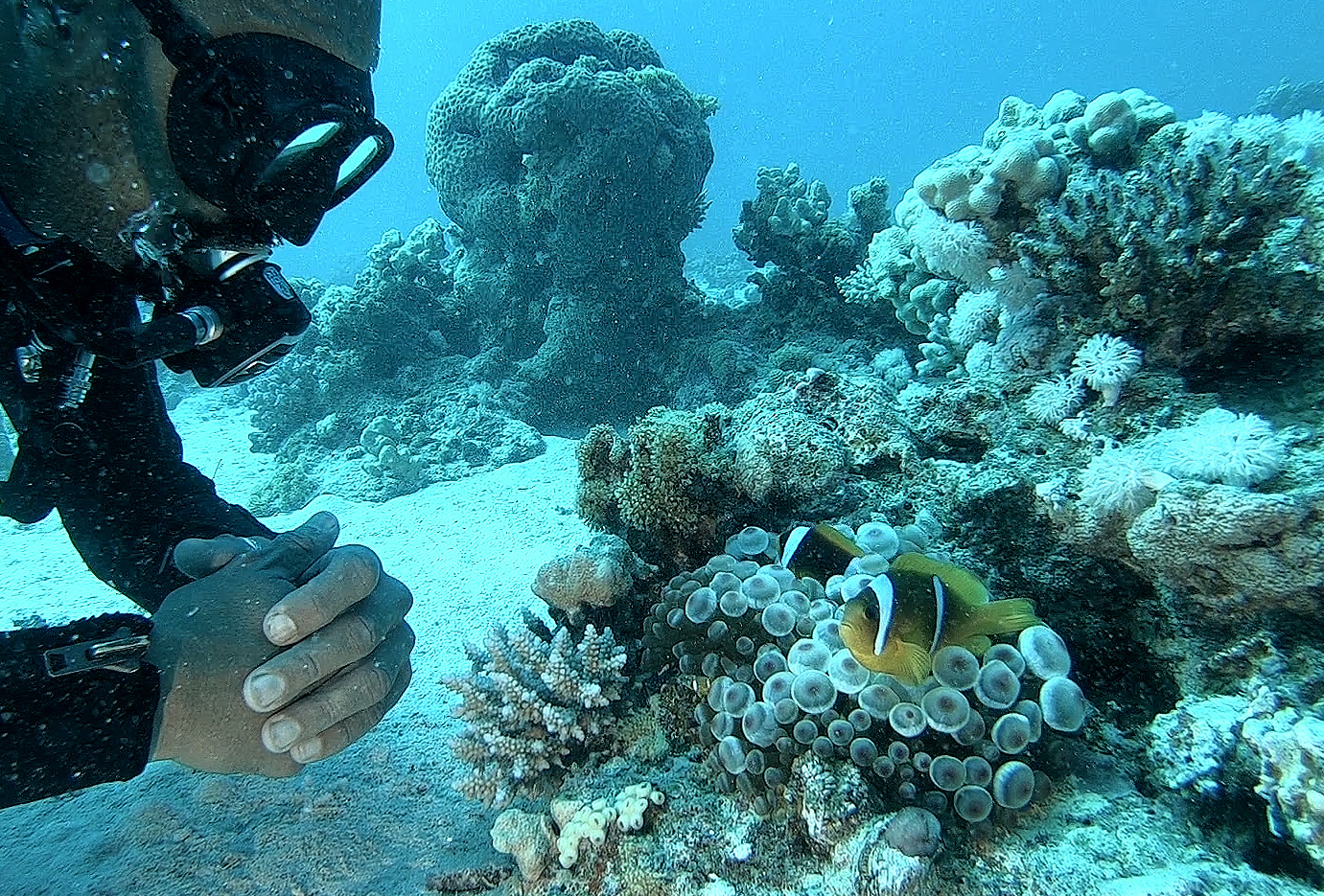
The waters around Somabay are well protected and hold a rich variety of marine life. The reef edges are thriving colonies of coral and shoaling fish, while nearer the sea bed plenty of wildlife is still to be found.
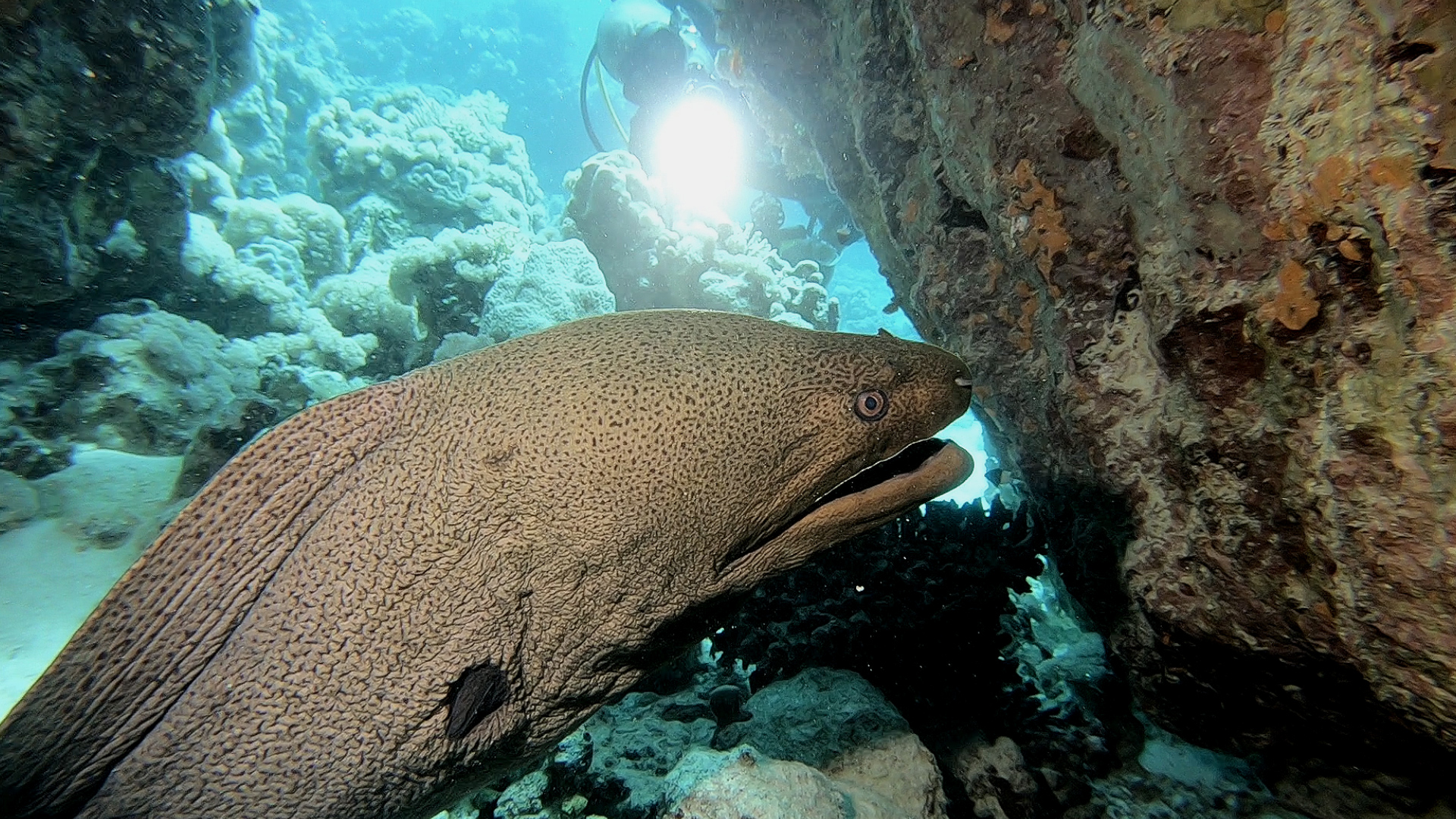
Then we located the turtles. They are very used to divers and so show little concern when slowly approached. In fact occasionally one will come over to see what you are doing. There is always huge excitement when diving with a turtle. The shear thrill of sharing a moment with another species.
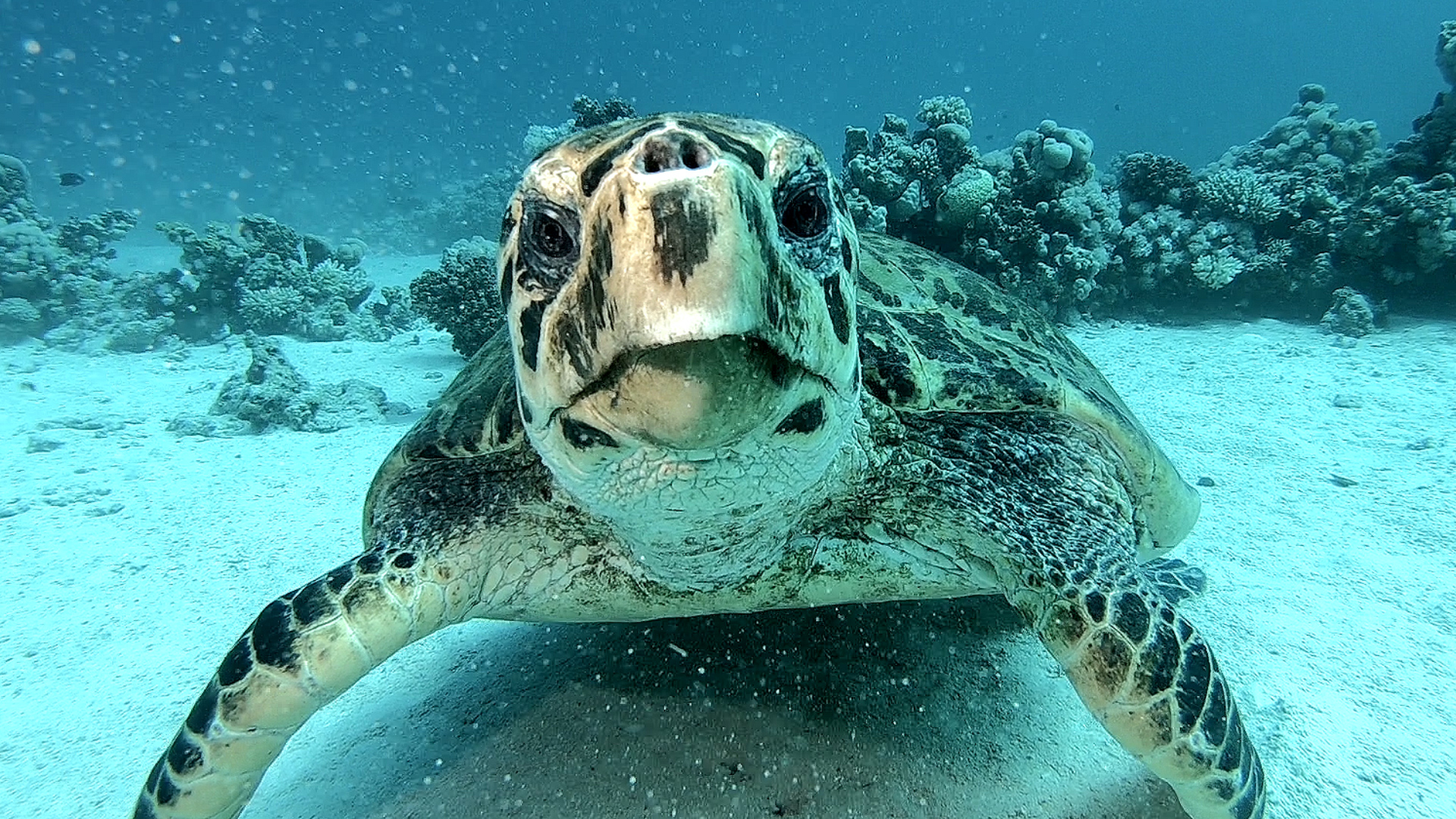
What a fantastic way to finish a wonderful few days diving and I would like to thank SOMABAY, ORCA DIVING and THE BREAKERS for making my stay such a good one.
I had a great time, with diving everyday either on the house reef or on one of the offshore reefs by inflatable or larger day boat. Orca diving provided high quality equipment and facilities while the staff were all very friendly and welcoming. The Breakers was right on the coast with nice rooms, good food and once again friendly staff making the whole trip a real pleasure.
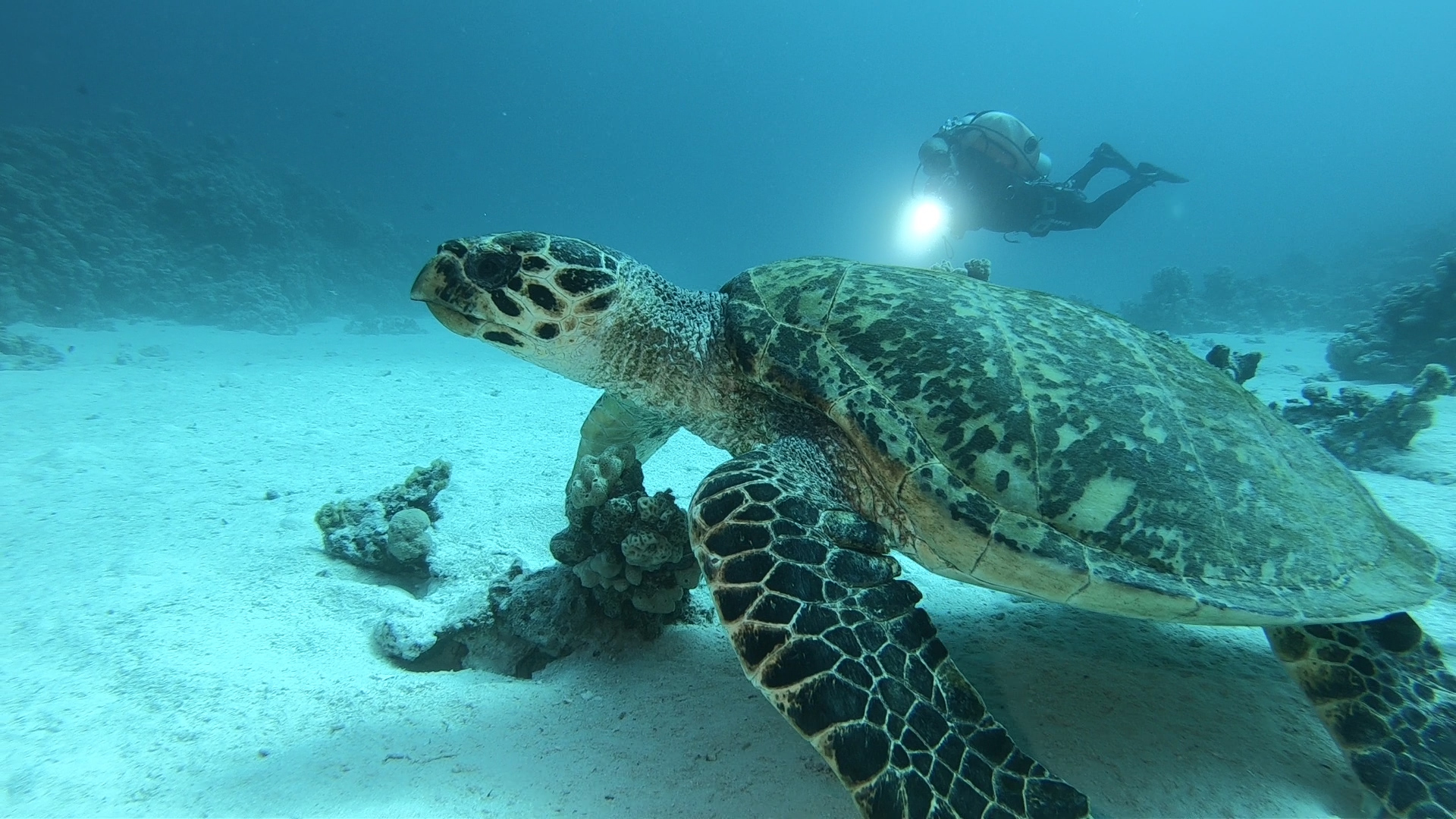
Soma Bay covers an entire peninsula and is home to several resorts as well as residential compounds.
As well as scuba diving, Somabay caters for many other sports and activities, and so is perfect for families as well as individuals and/or groups. And of course there is always time to lay peacefully on the beach under the Egyptian sun.
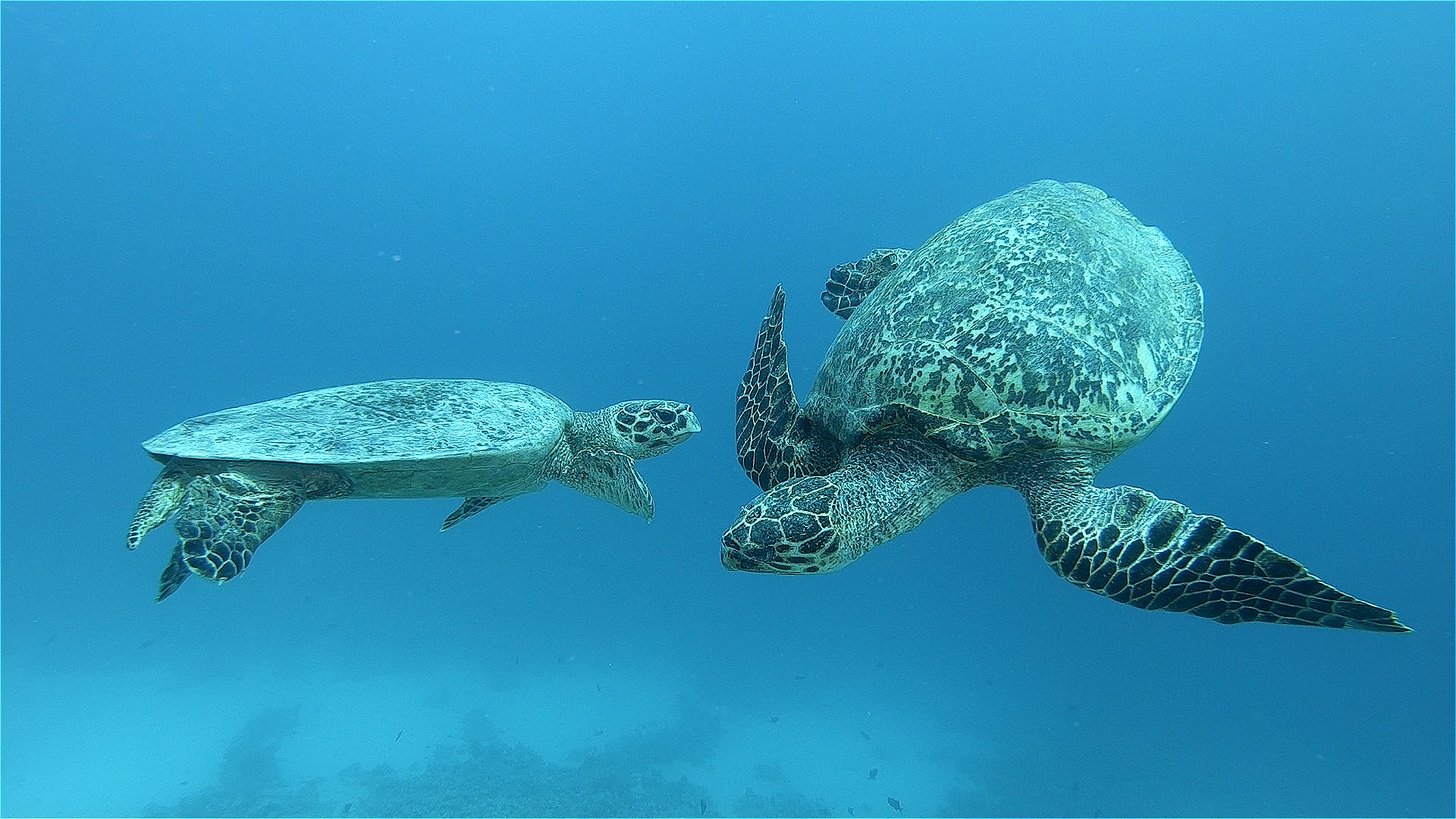
Book your next Red Sea dive adventure with SOMABAY! For more information, visit www.somabay.com.
Stay at the Breakers Diving & Surfing Lodge when you visit! For more information, visit www.thebreakers-somabay.com.
Find out more about ORCA Dive Clubs at SOMABAY at www.orca-diveclubs.com/en/soma-bay-en.
Blogs
TRAVEL BLOG: Jeff Goodman Dives SOMABAY, Part 2

Day three of my trip to Somabay and we were spending the day on the Lady Christina and diving on the wreck of the Salem Express.
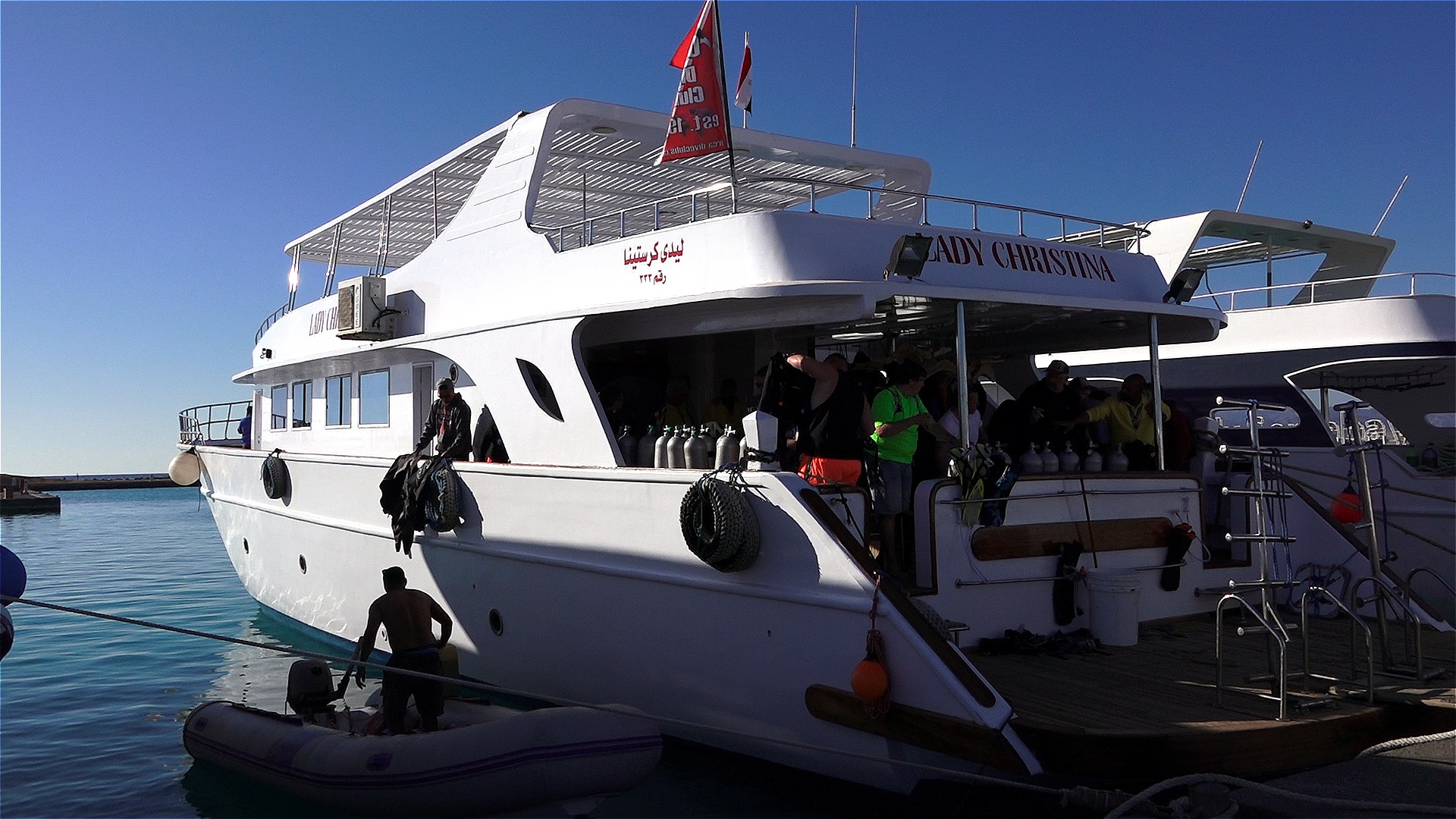
Diving wrecks for me is always one of mixed emotions. The excitement of diving a wreck is more than often tempered by the thought of loss of life when she sank. The Salem Express was a passenger ship and a roll-on/roll-off ferry travelling from Jeddah, Saudi Arabia to Safaga, Egypt. Most passengers were of poor class travelling home from their holidays while around 150 people were returning home from their pilgrimage to Mecca.

The ship struck a reef and sank within 20 minutes. Passengers were trapped below deck and the ship was filled with fear and panic.

The wreck area is strewn with personal belongings from the crew and passengers such as a transistor radio and a flat iron for clothes. A diver at sometime has put them in a prominent place to be seen.

Tragically only one life boat was launched while the others went down with the ship. More than 600 men, women and children lost their lives here.

It’s a stark reminder that the sea can be unforgiving and so when we dive on such wrecks we should do so with humble regard.
Returning to the surface, shoals of fish are gathered under our boat and seem to be welcoming us back into the light.
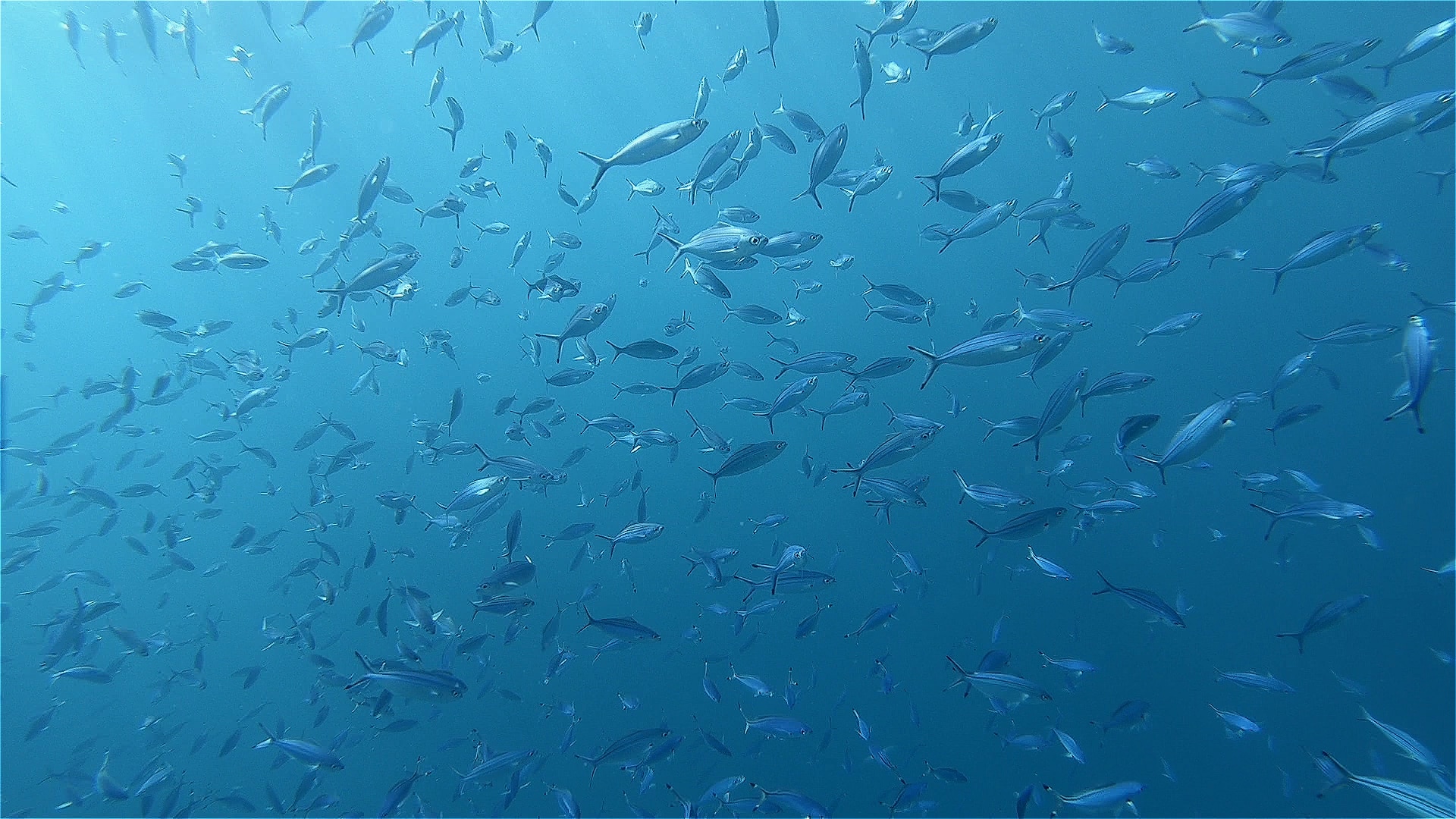
Back at the Breakers I sat in the dining area with a beer and a very good meal while my thoughts still remained with the day’s dive on the Salem Express.
Check in for part 3 tomorrow for Jeff’s last day of diving with Somabay on the off-shore reefs looking for turtles.
Book your next Red Sea dive adventure with SOMABAY! For more information, visit www.somabay.com.
Stay at the Breakers Diving & Surfing Lodge when you visit! For more information, visit www.thebreakers-somabay.com.
Find out more about ORCA Dive Clubs at SOMABAY at www.orca-diveclubs.com/en/soma-bay-en.
-

 News3 months ago
News3 months agoHone your underwater photography skills with Alphamarine Photography at Red Sea Diving Safari in March
-

 News2 months ago
News2 months agoCapturing Critters in Lembeh Underwater Photography Workshop 2024: Event Roundup
-

 Marine Life & Conservation Blogs2 months ago
Marine Life & Conservation Blogs2 months agoCreature Feature: Swell Sharks
-

 Blogs1 month ago
Blogs1 month agoMurex Resorts: Passport to Paradise!
-

 Gear News3 months ago
Gear News3 months agoBare X-Mission Drysuit: Ideal for Both Technical and Recreational Divers
-

 Blogs2 months ago
Blogs2 months agoDiver Discovering Whale Skeletons Beneath Ice Judged World’s Best Underwater Photograph
-

 Gear Reviews2 months ago
Gear Reviews2 months agoGear Review: Oceanic+ Dive Housing for iPhone
-
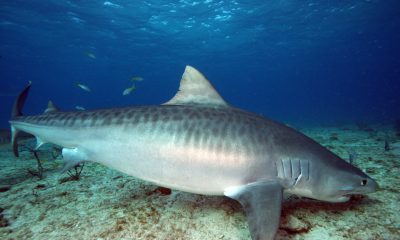
 Blogs3 months ago
Blogs3 months agoThe Thrilling Encounter with Tiger Sharks at Beqa Lagoon’s ‘The Colosseum’ with Coral Coast Divers


